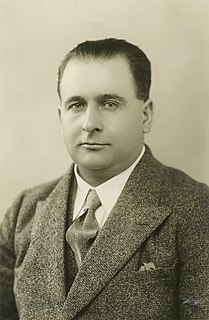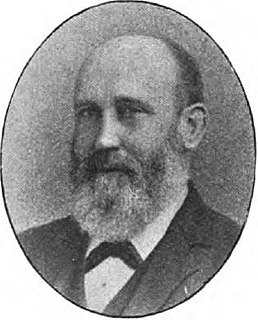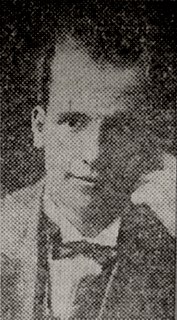Related Research Articles
The Miners' Federation of Great Britain (MFGB) was established after a meeting of local mining trade unions in Newport, Wales in 1888. The federation was formed to represent and co-ordinate the affairs of local and regional miners' unions in England, Scotland and Wales whose associations remained largely autonomous. At its peak, the federation represented nearly one million workers. It was reorganised into the National Union of Mineworkers in 1945.
The Liberal–Labour movement refers to the practice of local Liberal associations accepting and supporting candidates who were financially maintained by trade unions. These candidates stood for the British Parliament with the aim of representing the working classes, while remaining supportive of the Liberal Party in general.

Sir William Lawther was a politician and trade union leader in the United Kingdom.

Thomas Richards was a Welsh trade unionist and politician.

The National Union of Scottish Mineworkers (NUSW) is a trade union in Scotland, founded in 1894 as the Scottish Miners Federation. It joined the Miners' Federation of Great Britain, and in 1914 changed its name to National Union of Scottish Mineworkers. It survives as the National Union of Mineworkers.

William Johnson was an English coal miner, trade unionist and Liberal-Labour (Lib-Lab) politician from Warwickshire. He sat in the House of Commons from 1906 to 1918.

Joseph Jones was a British trade unionist.
The Lancashire and Cheshire Miners' Federation (LCMF) was a trade union that operated on the Lancashire Coalfield in North West England from 1881 until it became the Lancashire area of the National Union of Mineworkers in 1945.

The Nottinghamshire Miners' Association was a trade union representing coal miners in Nottinghamshire, in England.
The Midland Counties Miners' Federation was a trade union, representing coal miners in the West Midlands region of England.
The North Wales Miners' Association was a trade union representing coal miners in Wales.
The Fife and Kinross Miners' Association was a coal miners' trade union based in Fife and Kinross-shire in Scotland.
William Whitefield was a British trade unionist.
George Henry Jones was a British trade unionist and politician.
The North Staffordshire Miners' Federation was a trade union representing miners in the area of Stoke-on-Trent, located in Staffordshire, in England.
The National Federation of Colliery Enginemen and Boiler Firemen was a union federation in the United Kingdom. Its membership changed over time, but was centred on unions representing enginemen at coal mines.
This article is about the sponsorship of British Members of Parliament by mining trade unions.
The Cambrian Miners' Association, also known as the Rhondda District Miners' Association, was an early trade union representing coal miners in the Rhondda Valley, in Wales.
The Western Miners' Association was a trade union representing coal miners in parts of South Wales, centred on Neath.
Jesse Butler was a British trade unionist and politician.
References
- ↑ Report on Trade Unions in 1905-1907. London: Board of Trade. 1909. p. 82-101.
- ↑ Quinault, Roland (2004). Landlords and Labourers in Warwickshire c.1870-1920. Dugdale Society. p. 12. ISBN 0852200854.
- ↑ "Miners' Conference at Birmingham". Manchester Guardian. 9 October 1889.
- ↑ Smethurst, John B.; Carter, Peter (2009). Historical Directory of Trade Unions. 6. Farnham: Ashgate Publishing. p. 506. ISBN 9780754666837.
- ↑ The Labour Who's Who. London: The Labour Publishing Company. 1924. p. 94.
- ↑ Page Arnot, Robin (1949). The Miners: 1889-1910. Allen & Unwin. p. 373.